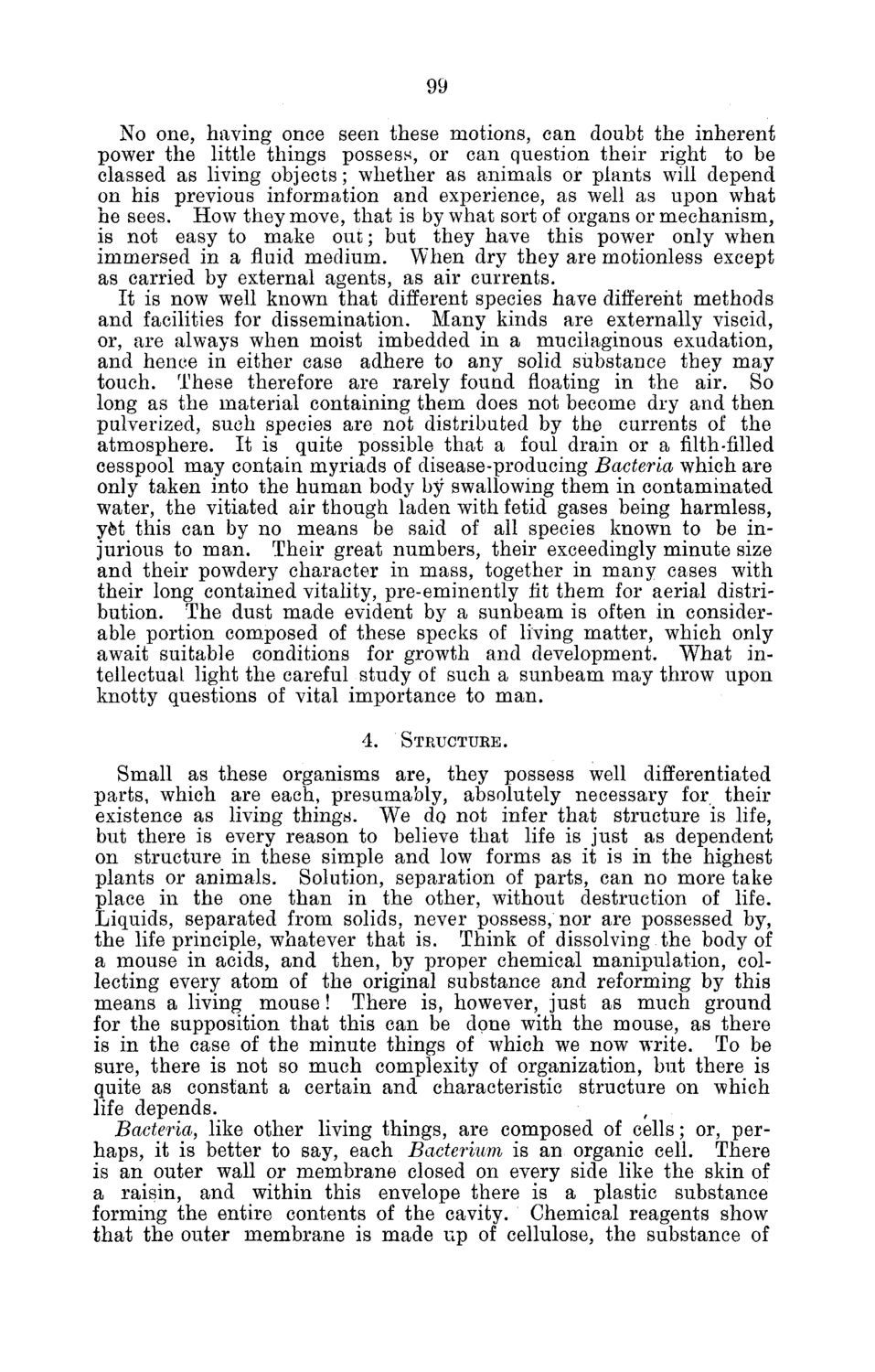| |
| |
Caption: Board of Trustees Minutes - 1882
This is a reduced-resolution page image for fast online browsing.

EXTRACTED TEXT FROM PAGE:
99 No one, having once seen these motions, can doubt the inherent power the little things possess, or can question their right to be classed as living objects; whether as animals or plants will depend on his previous information and experience, as well as upon what he sees. How they move, that is by what sort of organs or mechanism, is not easy to make out; but they have this power only when immersed in a fluid medium. When dry they are motionless except as carried by external agents, as air currents. It is now well known that different species have different methods and facilities for dissemination. Many kinds are externally viscid, or, are always when moist imbedded in a mucilaginous exudation, and hence in either case adhere to any solid substance they may touch. These therefore are rarely found floating in the air. So long as the material containing them does not become dry and then pulverized, such species are not distributed by the currents of the atmosphere. It is quite possible that a foul drain or a filth-filled cesspool may contain myriads of disease-producing Bacteria which are only taken into the human body by swallowing them in contaminated water, the vitiated air though laden with fetid gases being harmless, yet this can by no means be said of all species known to be injurious to man. Their great numbers, their exceedingly minute size and their powdery character in mass, together in many cases with their long contained vitality, pre-eminently fit them for aerial distribution. The dust made evident by a sunbeam is often in considerable portion composed of these specks of living matter, which only await suitable conditions for growth and development. What intellectual light the careful study of such a sunbeam may throw upon knotty questions of vital importance to man. 4. STRUCTURE. Small as these organisms are, they possess well differentiated parts, which are each, presumably, absolutely necessary for their existence as living things. We do, not infer that structure is life, but there is every reason to believe that life is just as dependent on structure in these simple and low forms as it is in the highest plants or animals. Solution, separation of parts, can no more take place in the one than in the other, without destruction of life. Liquids, separated from solids, never possess, nor are possessed by, the life principle, whatever that is. Think of dissolving the body of a mouse in acids, and then, by proper chemical manipulation, collecting every atom of the original substance and reforming by this means a living mouse! There is, however, just as much ground for the supposition that this can be done with the mouse, as there is in the case of the minute things of which we now write. To be sure, there is not so much complexity of organization, but there is quite as constant a certain and characteristic structure on which life depends. Bacteria, like other living things, are composed of cells; or, perhaps, it is better to say, each Bacterium is an organic cell. There is an outer wall or membrane closed on every side like the skin of a raisin, and within this envelope there is a plastic substance forming the entire contents of the cavity. Chemical reagents show that the outer membrane is made up of cellulose, the substance of
| |